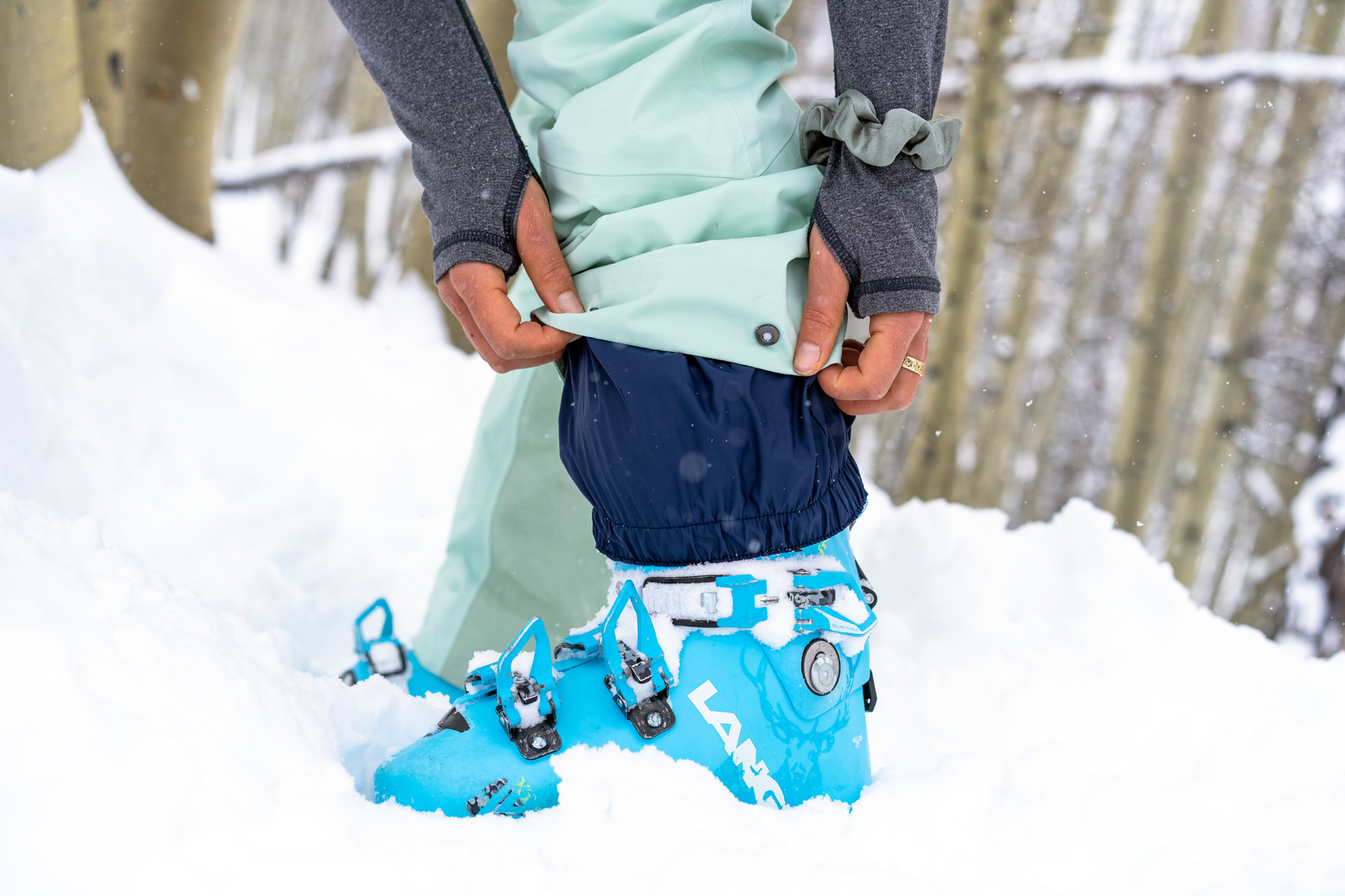They may not be as flashy as the colorful topsheets on your skis, but women’s ski boots are the unsung heroes of any ski day. Not only can uncomfortable ski boots ruin a good powder day with cramped feet, but ill-fitting boots can lead to sloppy skiing, poor technique or worse.
Fortunately, there are now more choices for ski boots for women. If you’re looking for a best all-around option, take a look at the Tecnica Mach1 MV, a responsive-yet-accessible ski boot with a 99-100mm last that works for the vast majority of lady shredders. If you’re a skier with narrow feet, the K2 Cortex 105 W Zonal BOA with the dual BOA system may be a good fit with the boot’s low-volume 96-98mm last.
From narrow to wide lasts, plenty of flex offerings, a variety of volumes, and even new BOA fit system enclosures, we have plenty of options. That’s why we spent two months testing this season’s top choices for women’s ski boots. From the slopes of Aspen to the pistes of France, we logged over 60 days in ski boots this winter. Below are the top choices for women’s ski boots this season.
Don’t miss our Best Ski Boots buyer’s guide with more options for all types of feet and skiers.
The Best Ski Boots for Women in 2025-2026
Best Overall Ski Boots for Women
9.1/10 Rating
Best Budget Ski Boots for Women
8.2/10 Rating
Best Aggressive Ski Boots for Women
8.4/10 Rating
Best Intermediate Ski Boots for Women
8.6/10 Rating
Best Easy-Entry Ski Boots for Women
8.0/10 Rating
Best Narrow Ski Boots for Women
8.0/10 Rating
See more picks
-
Versatility in flex and volume for a variety of skiers -
Very warm -
Lower cuff that more easily fits a female foot -
Highly customizable with a bootfitter
-
BOA Fit Enclosure system allows for micro adjustments and plenty of comfort -
MultiFIT last allows for wiggle room in sizing for beginners trying to figure it out -
A stiff-yet-forgiving flex gives skiers room to advance their skills
-
Not everyone is sold on BOA
-
Very responsive on piste -
Snug fit in the heel for greater control -
All-mountain versatility means you can take it anywhere and ski happy
-
Skis narrower and firmer than numbers indicate
-
Easiest entry we’ve tested, even when cold -
Incredibly plush and warm liner -
Friendly mid-volume fit works for a lot of skiers
-
Fixed forward lean due to the spine mechanism
-
Dual BOA system allows for a snug all-around fit -
Balanced flex hits that sweet spot between stiffness and forgiveness -
Low-volume fit is very responsive
-
Dual BOA system has a learning curve when taking the boots on and off -
Low-volume fit won’t work for all feet
| Ski Boots for Women | Price | Last | Flex | Weight | Sizes |
|---|---|---|---|---|---|
| Tecnica Mach1 MV 105 BOA | $700 | 98 mm | 95, 105, 115 | 3 lb. 10.6 oz | 22.5-25.5 |
| K2 Anthem 95 BOA | $600 | 97-100 mm | 95, 105, 115, 125 | 3 lb. 7.2 oz. | 22.5-27.5 |
| Dalbello Veloce 105 MV W | $700 | 99 mm | 95, 105 | 4 lb. 1.3 oz. | 22.5-27.5 |
| Nordica Speedmachine 3 105 W | $750 | 100 mm | 95, 105 | 3 lb. 12 oz. | 22.5-27.5 |
| Rossignol Vizion 4B Pro 90 GW | $700 | 100 mm | 80, 90, 100 | 4 lb. 0.6 oz. | 22.5-27.5 |
| K2 Cortex 105 W Zonal BOA | $850 | 96-98 mm | 105, 125 | 3 lb. 13.8 oz. | 21.5-27.5 |
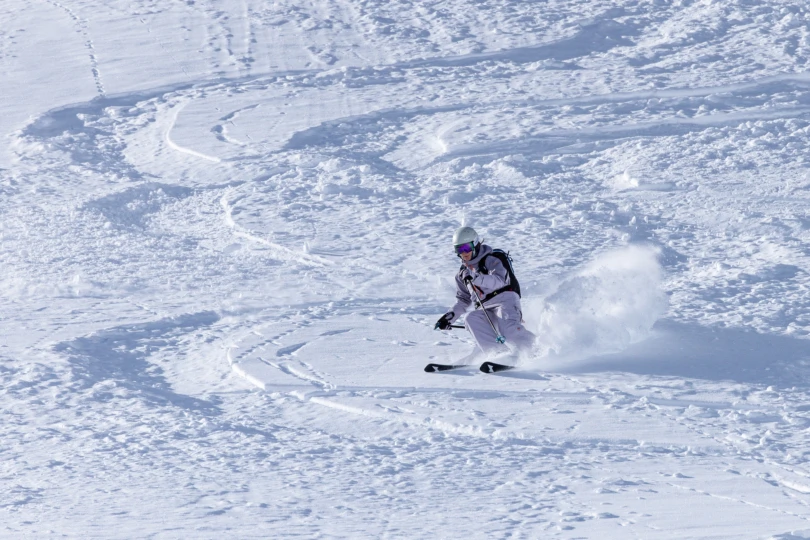


How We Tested the Best Ski Boots for Women
Our Expert Testers
GearJunkie contributor Heather Balogh Rochfort reviews and tests gear from her homebase outside of Aspen, Colorado, where she logs 50-60 ski days each season. A former ski instructor and adaptive ski instructor through the National Sports Center for the Disabled, Balogh Rochfort has given both knees to the sport (two ACLs and counting) but still loves to slide on snow whenever possible. Her weekends are spent chasing her daughter around the four hills in Aspen. On the weekdays, you’ll find her ski touring the local backcountry or uphilling after hours.
Our Testing Grounds
Our testing grounds spanned some of the most iconic terrain in the world, with the majority of days logged at Aspen Snowmass — specifically Highlands and Snowmass, two of the resort’s four mountains known for their diverse terrain and challenging conditions. From Highlands Bowl’s steep powder lines to Snowmass’s wide-open groomers and tree runs, the variety provided an ideal environment to test performance across changing snow and weather. Beyond Colorado, Balogh Rochfort spent a week skiing in the Italian Dolomites and another in Tignes, France, where high-alpine conditions, glacier terrain, and variable spring snow offered valuable perspective on how gear performs across continents and climates.
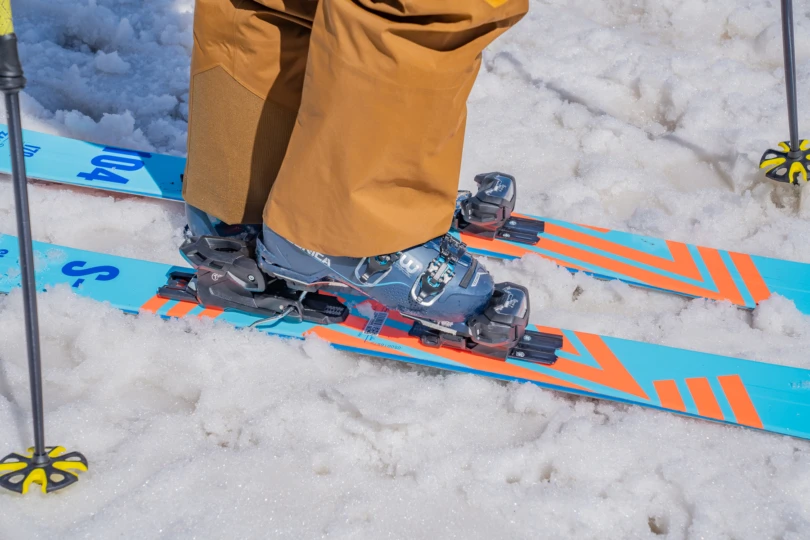



Our Ski Boots for Women Rating Process
We score each pair of ski boots on a 1-10 rating scale for four categories: Comfort, Performance, Features, and Value.
Comfort
Comfort is often the deciding factor in how long you’ll stay out on the mountain, and it starts with the last shape. This is the internal width and contour of the boot that determines how it fits your foot. A boot that matches your foot shape can mean the difference between all-day warmth and constant pressure points. Warmth also plays a key role, with insulation, liner materials, and shell construction all affecting how well your feet stay cozy on cold lift rides. The closure system, whether traditional buckles or newer BOA dials, influences comfort too. It determines how evenly pressure is distributed and how easy it is to make micro-adjustments throughout the day.
Performance
Performance comes down to how effectively a boot translates your movements into control on snow. The most important element here is flex, which affects both precision and forgiveness. Stiffer boots generally cater to aggressive skiers who prioritize responsiveness and power transfer, while softer models favor comfort, playfulness, and easier turn initiation. A good-performing boot should feel like an extension of your leg: supportive yet natural, allowing you to ski confidently across a variety of terrain and snow conditions.
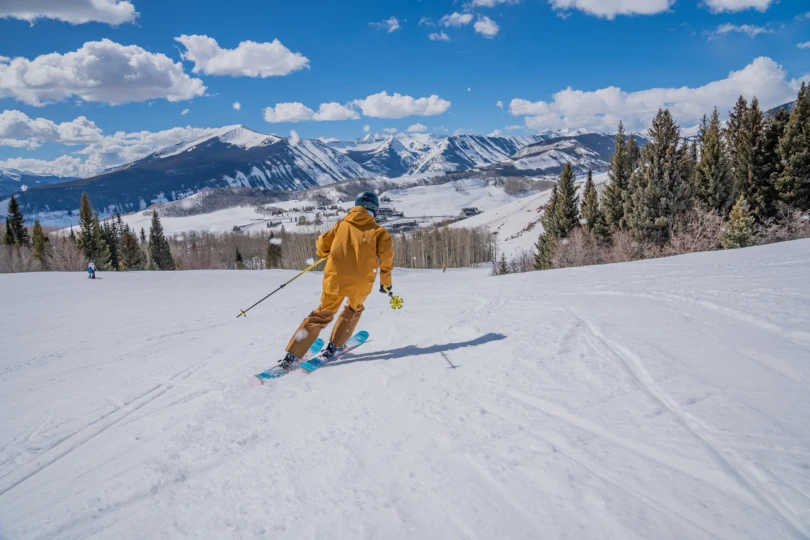



Features
Modern ski boots are loaded with thoughtful features that enhance both convenience and versatility. A BOA dial system offers quick, uniform tightening with a twist, while walk modes allow for a more natural range of motion when hiking or bootpacking. Other notable details might include adjustable canting, customizable liners, GripWalk soles, or micro-adjustable buckles. All of these are small touches that make a big difference in usability. The best boots blend these features seamlessly without overcomplicating the design.
Value
Value weighs the overall performance, comfort, and feature set against the boot’s price tag. A high-end model packed with premium materials and cutting-edge technology might justify its cost for advanced or frequent skiers, while a more affordable boot that performs admirably across multiple categories can be an even better deal. Ultimately, the best value boots deliver reliable performance and comfort without unnecessary extras, proving that great skiing experiences don’t always require the most expensive gear.
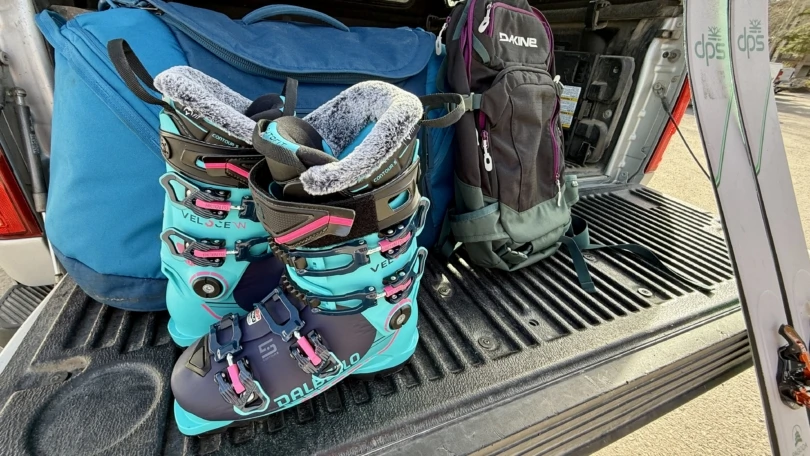



Buyer’s Guide: How to Choose Ski Boots for Women
Bottom line: ski boots will make or break your ski day. And, good ski boots can make you a better skier. While these clunky, plastic boots aren’t the most fun aspect of the sport, a high-quality, well-fitted, and appropriately-matched pair of boots can help you take your skills to the next level — or leave you wallowing in a pit of discomfort.
Ski Boot Flex
Ski boot flex refers to how stiff or soft a boot feels when you lean forward into it, and it plays a huge role in how your skis respond. Flex ratings aren’t standardized across brands, but they generally range from 65 to 120 for women’s boots. Lower numbers (65–90) mean a softer, more forgiving flex— ideal for beginners or lightweight skiers. Higher numbers (100–120) are stiffer and more responsive, meant for experienced or aggressive skiers who want maximum control at higher speeds.
For women especially, weight and strength matter just as much as ability when choosing a flex. A stiffer boot requires more force to engage, so if a boot is too stiff for your build, it can feel unresponsive and actually make skiing harder. On the flip side, if a boot is too soft for your skill or size, you may overpower it and lose precision—especially on steeper terrain or in variable snow.
Most beginners and lighter women will feel more confident in a soft to medium flex (65–100), like found in the K2 Anthem 95 BOA or the Rossignol Vizion 4B Pro 90 GW. Stronger skiers often do well in the 100–115 range, as found in the Tecnica Mach1 MV 105 W. Experienced, powerful skiers can top out into that rarer 115-125 flex. If you’re unsure, it’s better to go slightly softer since you can always upgrade as your skills and strength improve.
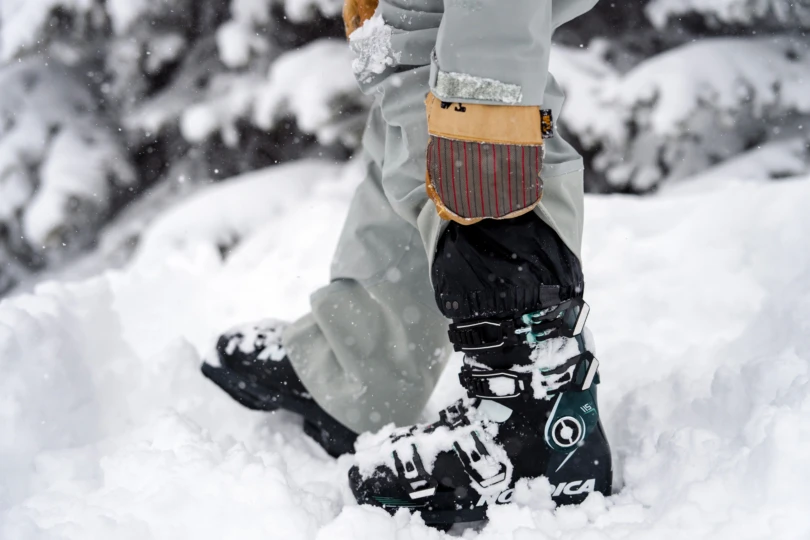



Sizing: Mondopoint and Last Width
Ski boot sizing can feel confusing at first, but it boils down to two key numbers: Mondopoint and last width.
Mondopoint
Mondopoint is the international sizing standard for ski boots, and it’s simply the length of your foot in centimeters. So if your foot measures 24.5 cm, you likely wear a 24.5 boot. Unlike street shoes, ski boots should fit snugly, especially for performance, so don’t be surprised if your usual shoe size doesn’t translate exactly.
Pro tip: Don’t follow those online sizing charts we’ve all looked at for ski boots. They go based on your street shoe size, but they’ll usually pop you into a too-big boot.
Last Width
The second measurement is last width, which refers to the width of the boot’s forefoot. Most women’s boots fall between 97mm and 100mm, with some going wider. A narrow last (97–98mm) is best for low-volume feet or skiers who want a tight, responsive fit. A medium last (99–100mm) suits average-width feet. Anything over 100mm is better for wider feet or those prioritizing all-day comfort.
If you’re a beginner, a slightly roomier fit can be more forgiving and comfortable, while allowing you time to adjust to life in plastic boots that are inherently uncomfortable. Advanced skiers often prefer a more locked-in, precise feel.
Many boots now use customizable shells and liners — or flexible systems like the K2 MultiFIT lasts — to dial in fit across a range of foot shapes. In this guide, both the K2 Anthem 95 BOA and the K2 Cortex 105 Zonal BOA have a flexible last fit.
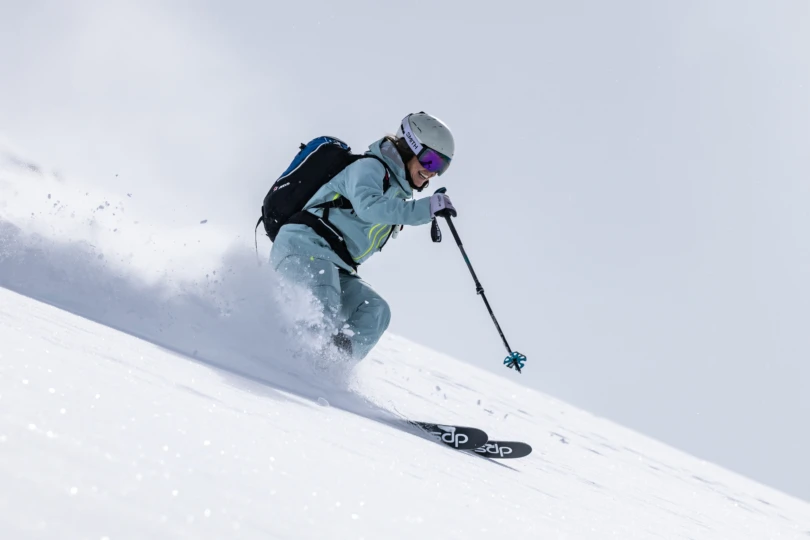



Buckles versus BOA Closures
For decades, ski boots used traditional buckles. But then BOA changed the game.
Until recently, four-buckle designs (like in the Dalbello Veloce 105 MV W) were the norm, offering secure closure but often requiring fine-tuning at the lodge or during lift rides. That started to shift during the 2023-2024 season, when single BOA dial boots exploded onto the market, offering a fast, even wrap around the lower foot.
Dual BOA systems (with dials on both the cuff and forefoot) became the biggest boot story of the 2024-2025 season, especially in performance and freeride models. Moving forward, it’s clear that BOA is here to stay. For instance, the K2 Anthem 95 BOA, Nordica Speedmachine 3 105 W, and the K2 Cortex 105 Zonal BOA all have one or two BOA dials.
Most skiers have embraced BOA for its easy, precise fit. The dials are quick to adjust, even while wearing mittens, and help reduce pressure points by evenly tightening the shell. For those learning or still dialing in their boot fit, this adjustability is a huge perk.
That said, some skiers — particularly those with very narrow feet or aggressive skiing styles — feel BOA boots don’t quite match the “cranked-down” tension of traditional buckles. And some still have concerns about BOA dials breaking during use.
Still, for many skiers, the convenience and comfort outweigh the tradeoff. And as BOA systems continue to evolve, we’re seeing more brands fine-tune the tension and stiffness to meet a wider range of needs.
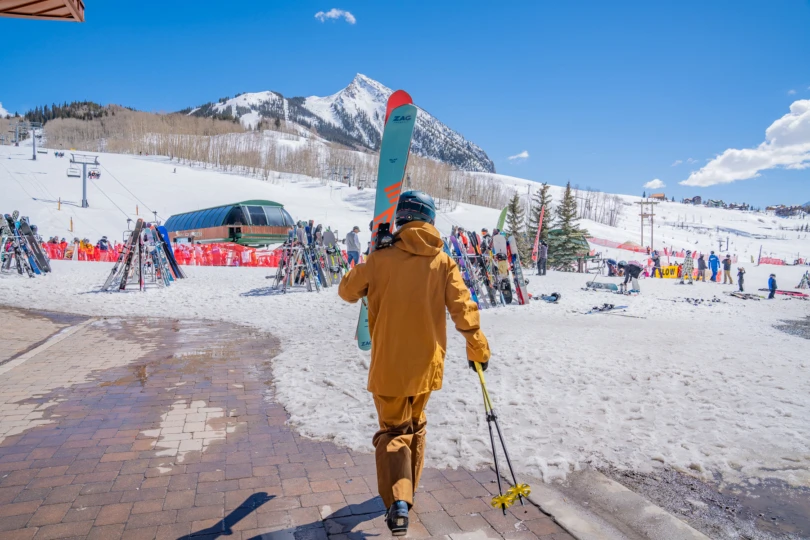



Ski Boot Liners
Ski boot liners are the soft, insulated layer inside the hard plastic shell — and they make a big difference in how a boot feels and performs. Liners provide cushioning, warmth, and ankle support, and they play a major role in preventing fatigue, especially on long ski days. For women-specific boots, many liners are shaped with lower calf profiles, narrower heels, and softer materials to better match common anatomical differences.
Most stock liners are made from injected or molded foam wrapped in a light fabric, and they gradually adapt to your foot as you ski. Higher-end women’s boots often feature heat-moldable liners that can be customized at a shop (or sometimes at home) for a better fit right out of the box. These liners help reduce pressure points and break-in time, which is key for skiers who are new to boots or have sensitive feet.
If you struggle with fit or cold feet, a professional bootfitter can adjust or replace your liners entirely. While aftermarket options exist, most skiers — especially beginners not ready to fork over more cash for customization — will find today’s stock women’s liners warm, supportive, and comfortable enough with a good initial fit and some time on snow.
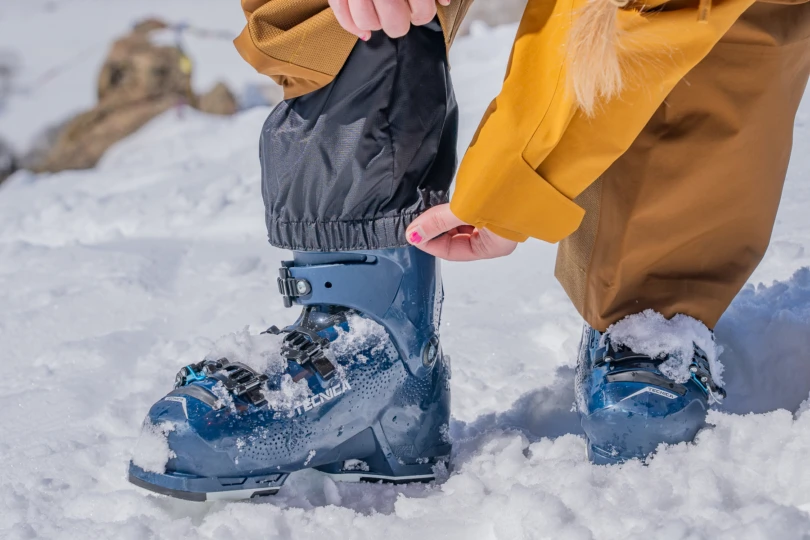



Ski Boot Warmth
Warmth might not be the first thing you think about when shopping for ski boots, but for many women, it’s a dealbreaker. Ski boots aren’t insulated like puffy jackets, but the liner material, shell design, and fit all contribute to how warm (or cold) your feet feel on the mountain.
Women-specific boots often include thicker or softer liners for added insulation, like the Rossignol Vizion 4B Pro 90 W GW. Some are designed with lower cuff heights to accommodate lower calf positioning, which can help circulation and reduce pressure that leads to cold feet. Many women’s boots also feature fleece, wool or faux-fur liners, which are cozy and add a bit of extra warmth without impacting performance.
That said, the biggest factor in staying warm is a snug, well-fitted boot. Gaps or pressure points can restrict blood flow or allow cold air in, making your toes freeze faster. Boots that are too big or too tight can make even the warmest liners feel icy by mid-morning.
If warmth is a major concern, look for heat-moldable liners, add thin wool ski socks (never thick ones), and consider models that are heater-compatible. For most women, the right fit plus modern liner materials are enough to stay cozy from first chair to last.
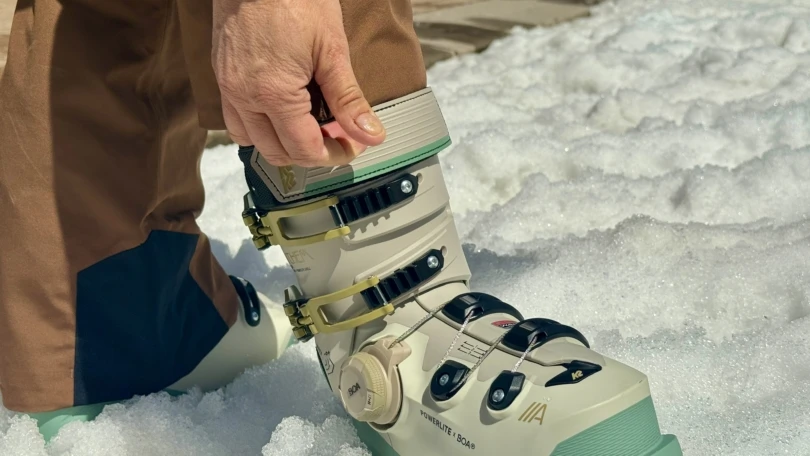



Price & Value
Like most gear in the ski world, women’s ski boots can be a serious investment. Expect to pay anywhere from $300 to $1,000 or more depending on your ability level, fit needs, and whether you’re going with a classic buckle design or the increasingly popular BOA system.
While sticker shock is real, the right pair of boots can make or break your ski day. It’s worth knowing what you’re paying for.
Budget
Beginner-friendly boots tend to be the most affordable, making them a great entry point for newer skiers. These boots prioritize comfort and warmth over precision and stiffness, which helps keep costs down. Take the K2 Anthem 95 BOA; a forgiving flex combined with BOA’s zonal fit system offers newer skiers an intuitive setup at a lower price point ($600).
Traditional buckle boots in this category can run even cheaper, sometimes dipping into the $300s, but may not offer the same micro-adjustability as BOA-equipped boots.
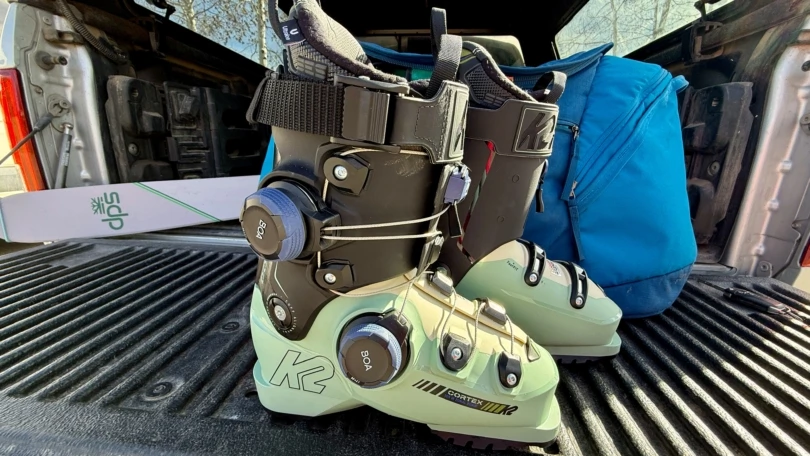



Mid-Tier
This is the sweet spot for most skiers, especially intermediates and advanced recreational skiers who are out there most weekends and need something they won’t outgrow. Expect to spend $600–$800 for this tier. Boots like the Nordica Speedmachine 3 105 W BOA, the Tecnica Mach1 MV 105 W, and the Rossignol Vizion 4B Pro 90 GW hit a sweet blend of performance, comfort, and innovation.
Worth noting: Women’s boots with BOA systems tend to cost $50–$100 more than their buckle-based counterparts, but they also offer a more even and customizable fit — especially useful for women with tricky feet or pressure points. And with newer BOA models offering zonal control (like the K2 Cortex 105 W Zonal BOA), that price bump often comes with a serious performance edge.
Premium
High-end women’s boots aimed at aggressive skiers or part-time backcountry dabblers typically land in the $850–$1,000+ range. These boots prioritize stiffness, response, and anatomical fit for a precise feel and strong downhill power. They’re built with better liners, more advanced shell materials, and in some cases, a hybrid-friendly flex pattern or walk mode. Thankfully, in many cases — like with the Dalbello Veloce 105 MV W —you can still get this level of performance without tipping into this higher price bracket.
While there are still more options in buckle-style boots at this top tier, BOA is quickly gaining traction here, like with the K2 Cotex 105 W Zonal BOA (notably the most expensive boots in this test). As more female skiers demand performance without sacrificing fit, premium BOA boots are becoming a worthwhile (and increasingly common) splurge.
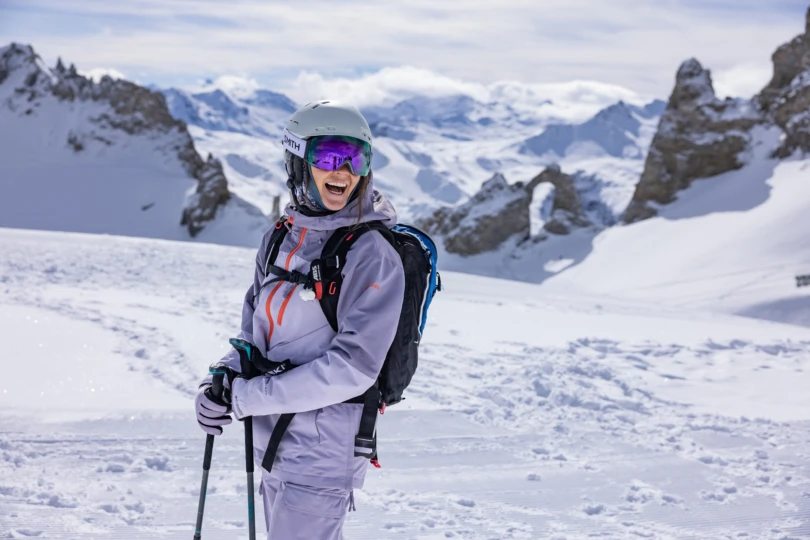



Frequently Asked Questions
Women’s ski boots are designed with anatomical differences in mind. You’ll usually find a lower and more contoured cuff to accommodate shorter calves, narrower heel pockets, and softer flex ratings to match typical weight distribution and muscle structure. These tweaks help improve comfort and performance for lady shredders while reducing common pain points like calf pinch or heel lift.
It’s important to consider your foot width, not just your shoe size. If you often feel pressure along the sides of your feet or get “hot spots” when skiing, you may need a wider boot. Conversely, if your foot moves around or your heel lifts, you might benefit from a narrower fit.
Ski boot width is measured by the last, which refers to the width of the forefoot in millimeters. Narrow boots typically have a last of 97–98mm, medium boots fall in the 100–102mm range, and wide boots go up to 104mm or more.
Women with narrower feet should look for low-volume boots to avoid swimming inside their shell, while average-width feet usually fit well in a medium last. Visiting a boot fitter to get your foot measured is the best way to ensure you’re in the right volume and last since online sizing charts are notoriously inaccurate.
This is the hot debate of the past few ski seasons! Our answer: not better, just different. BOA systems offer quicker entry and exit, and they create a more uniform fit across the foot, which is especially helpful if you have pressure points or uneven foot volume.
Traditional buckles, on the other hand, allow for more manual fine-tuning at specific parts of the boot. Some women love the glove-like feel of BOA, while others prefer the old-school precision of buckles. It really comes down to personal preference and foot shape, even though the industry does seem to be moving in the direction of BOA boots.


Ski boots are so subjective — it all depends on your feet. Luckily, BOA’s dial adds the ability to make micro-adjustments for fit.
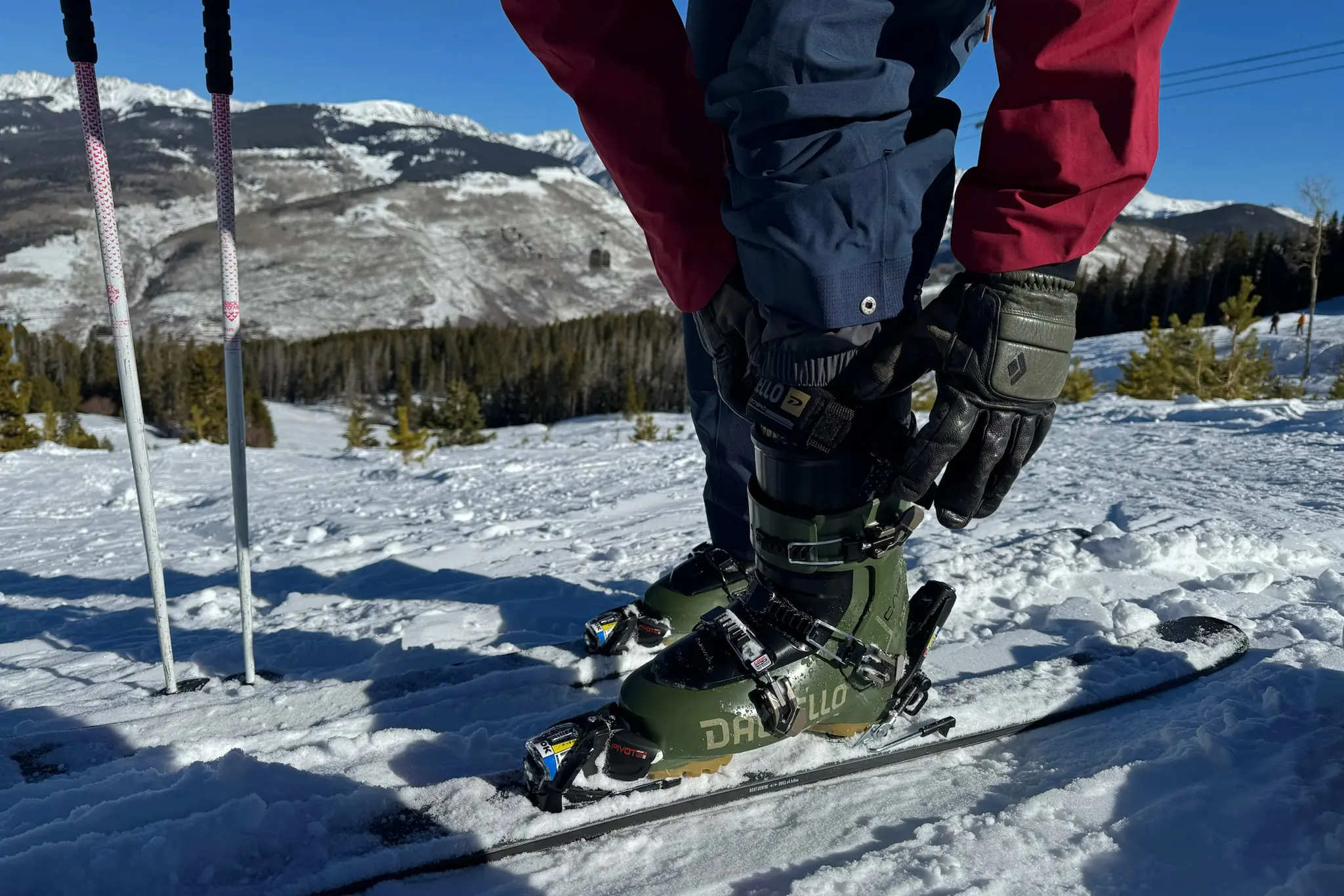

The Dalbello Cabrio LV 130 three-piece boots ski smooth and powerfully, yet soften impacts in harder snow — and unlike most traditional overlap boots, getting in and out of them is easy-breezy, painless, and quick.
Read the full article here




